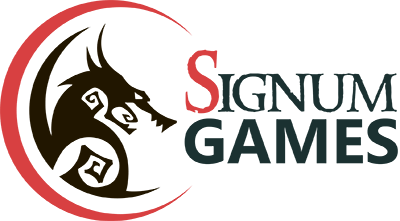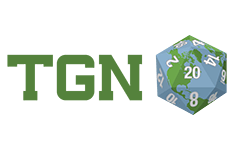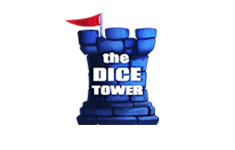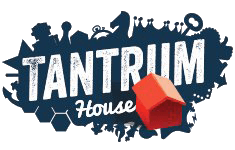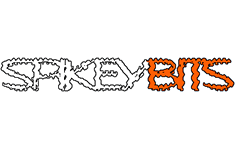Changes to Deck Building rules
Now your deck can contain less than a half of the total number of character cards or not have them at all.
The players compose their own Battle Decks, each of them can contain between 20 and 40 cards.
The Battle Deck can include any number of faction character cards as well as faction support cards, meanwhile, the deck may include no more than a half of Dogs Of War character cards of the total number of character cards in the deck, and no more than a half of Dogs of War support cards of the total number of support cards in the deck.
A deck cannot contain more than one character card of the same name.
Even if characters have the same name but different monikers, they still cannot be in the same deck at the same time.
The deck can include only a maximum of two spell, relic, and tactic cards of the same name.
New Card Type: Minion Card
Minions are a brand-new type of creatures. Minions can be summoned only with abilities of other cards, such as Ritual or Parasite. You can summon any number of the same minions, but the total number of your creatures on the Battlefield cannot exceed eight, including the Hero. Every minion is a stand-alone creature, and has its own bonuses, penalties and tokens.
Minion cards are indicated by a special symbol at the bottom left of the card ( 
The minion cards cannot be in the player’s deck like the Hero cards.
The minion cards along with the Hero card are placed on the game table at the start of the game and cannot be placed in any other game zone. This type of cards designates abilities of minions you are going to use in the game. If the minion is eliminated during the game, its template or miniature is removed from the Battlefield, but the minion card still should be next to the Hero card.
In most cases, the minions act according to the same rules as other creatures on the Battlefield, and also have their own icon in the ability text ( 

Tactic Cards
Now tactic cards can be activated by any fitting trigger.
A played tactic card is placed face-down and should not be shown to the opponent. Unlike spells, tactics do not take effect immediately, but after a certain condition (indicated on the card) is met.
Activation of a tactic card is up to the decision of the player who played it – they can declare it as soon as the specific event occurs for the first time or wait for a better moment. After activation, the tactic card is discarded to the Graveyard. A tactic can be activated only during the opponent’s turn unless otherwise stated.
Victory Conditions
The victory by Prosperity was modified.
The second way to win the game is through 

Glossary
Some mechanics in Glossary were changed
Agile, passive ability — the creature cannot be a target for Backstab when leaves contact by movement or placement with one or more opponent’s creatures not moving or placing into contact with opponent’s creatures.
Armour Х, triggered ability — When the creature is summoned to the Battlefield, it receives X Armour tokens.
Armour token: Whenever a creature with Armour tokens receives damage from non-magical attack or Backstab, that creature loses 1 Armour token per 1 damage instead of receiving wounds. If one attack deals more damage than Armour tokens the creature has, this damage removes all Armour tokens and the rest damage deals wounds. If any card or ability gives +X 
Concentration Х, activated ability — when the creature is summoned to the Battlefield, it receives X Concentration tokens. The creature with Concentration has: “
Control Х, activated ability, impact — the character can take control of an opponent’s character or minion. Choose a target for Control within XL to the character taking into account the Line of Sight; roll X dice — if there is the same number of 
Flight (Flying), passive ability — the creature can ignore obstacles when moving across the Battlefield, including other creatures and terrains. Miniatures with this ability still can’t end their movement in Impassable areas.
First word: [text], triggered ability — when the card is played, [text] must be immediately applied.
Healing (Heal) Х, activated or triggered ability, impact — remove X Wound tokens from a target of healing. If there are less wounds than the ability can heal, they all are removed and a creature is considered fully healed. Healing cannot be declared if the target of Healing doesn’t have wounds or if there is any factor that restricts Healing.
Persecution Х, triggered ability — when the creature eliminates an opponent’s creature, the creature can declare another attack in melee combat, X times per your turn. The creature can move within S into contact with another opponent’s creature before each of these additional attacks.
Now it’s easier to detect creatures with Stealth token. However, you get all advantages of the Stealth token even without a Stealth ability.
Stealth, activated ability — allows receiving a Stealth token. To get it – the creature with Stealth ability should activate it while not being in contact with the opponent’s creatures and not being a target for ranged attacks at the previous turn of the opponent. The creature cannot have more than one Stealth token. The creature with a stealth token is considered hidden and cannot be targeted by attacks or abilities of the opponent’s creatures, but still can be targeted by support cards. The character is considered detected losing a stealth token on 
. When a creature with Stealth is summoned to the Battlefield, it gains a stealth token.
Vampirism, triggered ability — when the creature deals wounds in a melee combat, it can be healed by 1.
New mechanic in Glossary
Brute, passive ability — the creature cannot be targeted by Control or any abilities of buildings.
Disease, triggered ability, indicated by Disease token — the creature receives 1 wound if declares attack; at the start of its activation, it can skip its activation to lose Disease.
Drill, triggered ability — when the character is summoned to the Battlefield, you can summon a minion of your faction into contact with each of your creatures with Drill.
Exhaustion X: [text], triggered ability — at the start of the creature’s activation, it can receive 1 wound to gain [text].
Flaw, passive ability — when receiving damage, the creature receives 1 extra damage.
Forged, passive ability – Forged cannot be healed and cannot gain Poison or Disease. Creatures with Vampirism cannot be healed if deals wounds to Forged.
Lunge, passive ability — the creature can declare melee combat within S distance away from its target if it’s possible to draw LoS between the attacker and the target. If during this attack the target is not in contact with the attacker, the target should assign all of its dice to defense only.
Lunge, ability — the creature can declare a melee combat within S distance away from its target when it’s possible to draw LoS between the attacker and the target. If during this attack the target is not in contact with the attacker, the target should assign all of its dice to defense only.
Monster, passive ability — cannot be healed; cannot be returned to hand; cannot be brought under control; cannot search ruins; cannot be affected by any effects of support cards.
Master of Ritual Х, passive ability — the creature can reroll up to X unsuccessful dice that it used for Ritual.
Parasite Х, triggered ability — whenever the creature eliminates a character, roll X dice: If at least 1 
Pathfinder, passive ability — the creature ignores Difficult terrain ability.
Persecution Х, triggered ability — when the creature eliminates an opponent’s creature, the creature can declare another attack in a melee combat, X times per your turn. The creature can move within S into contact with another opponent’s creature before each of these additional attacks.
Poison, triggered ability, indicated by Poison token — at the start of the creature’s activation, roll a dice: on 

Rain of Arrows, triggered ability — whenever the creature declares Shooting, the target character gains -1 until the end of the opponent’s turn. The effect cannot be accumulated.
Recruitment, activated ability — when a building is constructed in your city zone, you can summon a minion of your faction into contact with each of your creatures with Recruitment.
Requiem, triggered ability — when the character dies, before the miniature is removed from the Battlefield, roll a die individually for each other creature within S from it: On 
that creature receives 1 wound.
Resurgent, passive ability — Resurgent cannot be healed and cannot gain Poison or Disease. Creatures with Vampirism cannot be healed if they deal wounds to Resurgent.
Ritual X, activated ability — roll X dice, if at least one 
Sting: [text], passive ability — when the creature declares attack on a creature without Poison, the attacked creature gains Poison. When the creature declares attack on a creature with Poison, the creature with Sting gains [text] until the end of attack.
